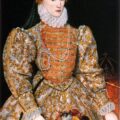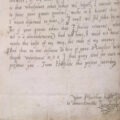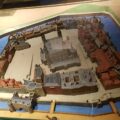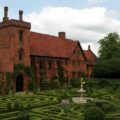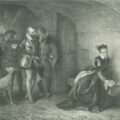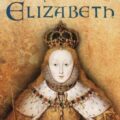What some people do not realise is that Elizabeth I was a very accomplished writer, something which could be attributed to her Humanist education but which was also a real gift. One of my favourite books is “Elizabeth I: Collected Works” which contains all of the letters, poems, prayers and speeches that Elizabeth wrote during her lifetime. It is an amazing collection and something that I love dipping into as it gives you a real glimpse into Elizabeth’s mind and a wonderful picture of the woman she was.
Today, I want to share with you the first two poems which are attributed to Elizabeth, written while she was at house arrest during the reign of her half-sister, Mary I, at Woodstock in Oxfordshire.
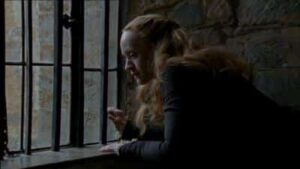
Poem 1
O Fortune, thy wresting, wavering state
Hath fraught with cares my troubled wit,
Whose witness this present prison late
Could bear, where once was joy flown quite.
Thou caused the guilty to be loosed.
This poem dates from 1554-55 and was found written in charcoal on a wall, shutter or window frame (depending on which source you believe) and copied down 40 years later. Leah S. Marcus, Janel Mueller and Mary Beth Rose, editors of “Elizabeth I: Collected Works”, point out that it was common practice in the 16th century to write messages, poems and proverbs on walls and shutters.
Poem 2
Much suspected by me,
Nothing proved can be.Quod Elizabeth the Prisoner
John Foxe, in his book “Actes and Monuments” (Foxe’s Book of Martyrs) writes that “When Elizabeth quitted Woodstock, she left the following lines written with her diamond on the window” and then cites the poem exactly as it is written above. The same wording is also recorded by Holinshed in his Chronicle:-
“Where vpon the ladie Elizabeth at hir departing out from Woodstocke, wrote these verses with hir diamond in a glasse window verie legiblie as here followeth:
Much suspected by me,
Nothing prooued can be
Quoth Elizabeth prisoner.”
Sources
- Elizabeth I: Collected Works, edited by Leah S. Marcus, Janel Mueller and Mary Beth Rose
- “Actes and Monuments”, John Foxe, p294-295. This can be read online at Project Gutenberg
- Holinshed’s Chronicle, Vol 6, 1587 edition, see The Holinshed Project
